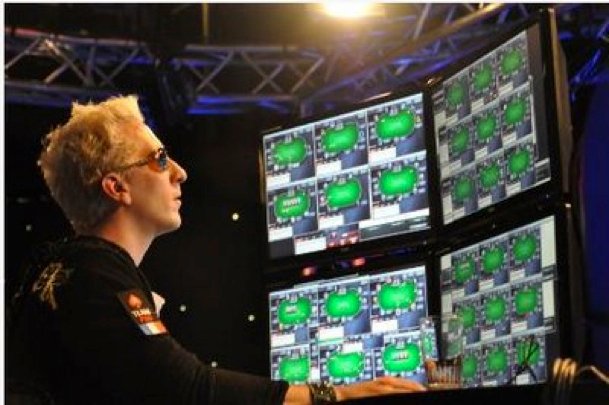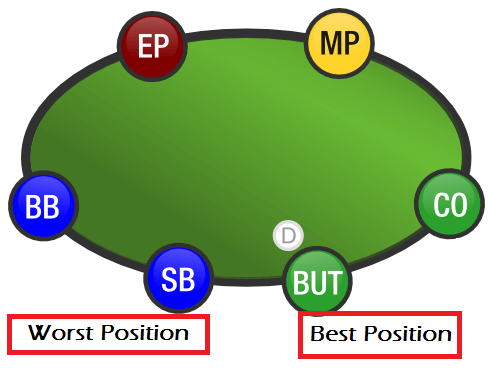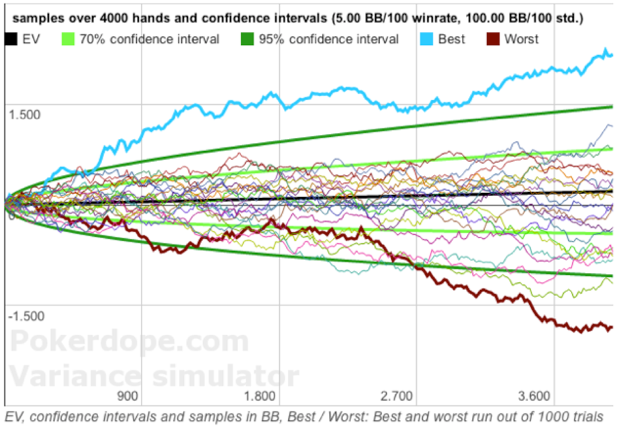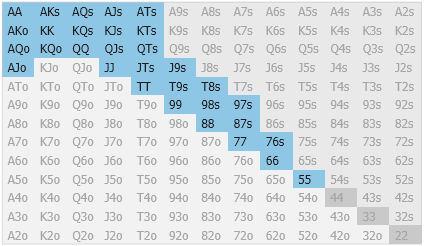How to Reduce Tilt During Poker Session

People always complain the reason they are losing at poker is because they run bad, but under estimate the power of going on tilt ( uncontrollable frustration and anger). For some its minor(hard to notice) and for others it can be quite massive and noticable ( break monitor). Recognizing it and why it happens is the key to reduce it from our overall game. The main reason we go on tilt is from unlucky situations, but what really destroys our mind set is the variance of losing a ton of our bank roll. We are taught every where to play Big Ball ( aggressive, high variance) poker. Then we try it and end up on full blown tilt on a big down swing( huge losses). Some read books, try to change personality, and even go to lower stakes. Nothing seems to work. To be realistic we probably wont get rid of tilt, but can definitely reduce it. If we think of all the money we could of saved from not tilting as much, our success would sky rocket. So since we can't control the unlucky situations lets focus on something we can change and that is the variance.
So to reduce variance in poker people say to play more tables. That does not always work as sometimes playing more tables can actually make our game worse. We start focusing less on the players and situations and more on making sure we don't time out on other tables. Our focus starts to go more towards the big pots and away from the smaller pots. When it effects our focus on our decisions I believe it actually adds more variance over time. Of course some people can do it that use software to make them go faster, but in reality its not something most of us can deal with. I believe reducing more tables to the point we can focus on the player, the situation, and our decision is the key to how many tables we actually play. Getting back focused on the decisions will reduce our overall variance.
We can also reduce the variance in how we play pre flop. Playing a tighter range can be quite boring. But to be honest it actually reduces variance. When we play a tighter range in general, we will hit more flops then our opponents who play a wider range. We will also have more value hands then they will over the long run. It doesn't mean to wait for AA-TT and AK all day either as over time the blinds would eat away at our stack. But it also doesn't mean to play hands like 74o. Add in some smaller hands that are suited and connected like 65s, that way opponents wont know what board textures to attack, but at the same time we will still hit a lot of board textures post flop with more juicy suited hands.
The power of position is something I preach to everyone. Try to play more hands in position then out of position. That will always reduce variance. When we are in position, we are last to act meaning we have more control of what we want to do post flop. If we want to play a smaller pot we can check back, and if we want to play a bigger pot we can bet. When are are out of position we lose a lot of that control which creates more variance. It doesn't mean we don't play any hands out of position, but we can fold the more marginal spots out of position and play the more marginal hands in position. Doing this will reduce a lot of variance.
The next thing I want to talk about is post flop play. We can reduce most of our variance post flop. We don't have to play every hand aggressively. The more money we lose the more tilted we get. The less money we lose the less tilted we get. So if we can reduce our losses to smaller pots, more then likely our tilt will be at a minimum compared to losing a huge pot. It is ok to check call or check back. Old timers have used this strategy for many years called small ball poker. Doyle Brunson profited almost every year of the TV show High Stakes Poker by using a small ball approach. If we have a marginal hand or drawing why not call over raising more often? This will take out a lot of variance by playing smaller pots with marginal hands . This can reduce a lot of tilt by keeping the pots smaller more often then not. I am not saying to never play big ball and raise but to reduce more of our marginal situations to small ball poker it can eliminate a lot of the tilt we deal with. Opponents will over play and make mistakes so why not let them make more big risks while we wait patiently to hit those big hands? If it helps reduce the variance it means we have less tilt during our sessions.
The last thing I want to talk about that is the number 1 problem I see with a lot of poker players is hero calling( we make call with a marginal hand that could be beat by opponents actions). I know it feels great to hero call and catch a bluff. We see a guy like Phil Ivey is a master at it, but we probably aren't the next Phil Ivey. But if we go back in our hand history to see all of our hero calls, reality is we are losing money. Sometimes we do have to hero call in poker. But they're a lot of times we plain and simply make bad calls. Sometimes the opponent over bets ( bets huge more then the pot) and its a easy fold. Sometimes the board has our hand crushed. But we still make these bad calls and go into tilt mode. Find more spots to hero fold where you know your hand is crushed. It doesn't mean to start hero folding everything. But if we could take out maybe 1/3rd of our really bad calls it could of saved a lot of money and reduce a lot of the variance which in return keeps us from tilting as much.
So just remember reducing tilt is not just about reading books on anger issues and a psychological problem. Its something we can reduce in the way we play poker on the table. It is great to be the blue line on the graph by playing a high variance style, but the last thing we want is to be the red line on the graph and lose our bank roll. If we can show a steady profit by using more small ball poker, with tighter ranges that in return reduces tilt, then it can actually be great over the long run. If tilt is what ruins our game to the worst losing sessions we have ever had, then why not make sure we keep our frustrations at a minimum so we can play longer more profitable sessions by just simply reducing the variance in some marginal spots? Poker is also more enjoyable when we lose a little over a lot. So remember reducing variance on the table can be a good thing if we take the time to apply it properly to our overall game.
Pictures:
Tom Dwan- World News
Elky- PokerPlayer365.com
UTG Pre flop range- PokerStrategy.com
Positions explained- VIP-Grinders
Doyle Brunson- Pinterest
Phil Ivey- You Tube
variance graphs- www.pokerlistings.es
